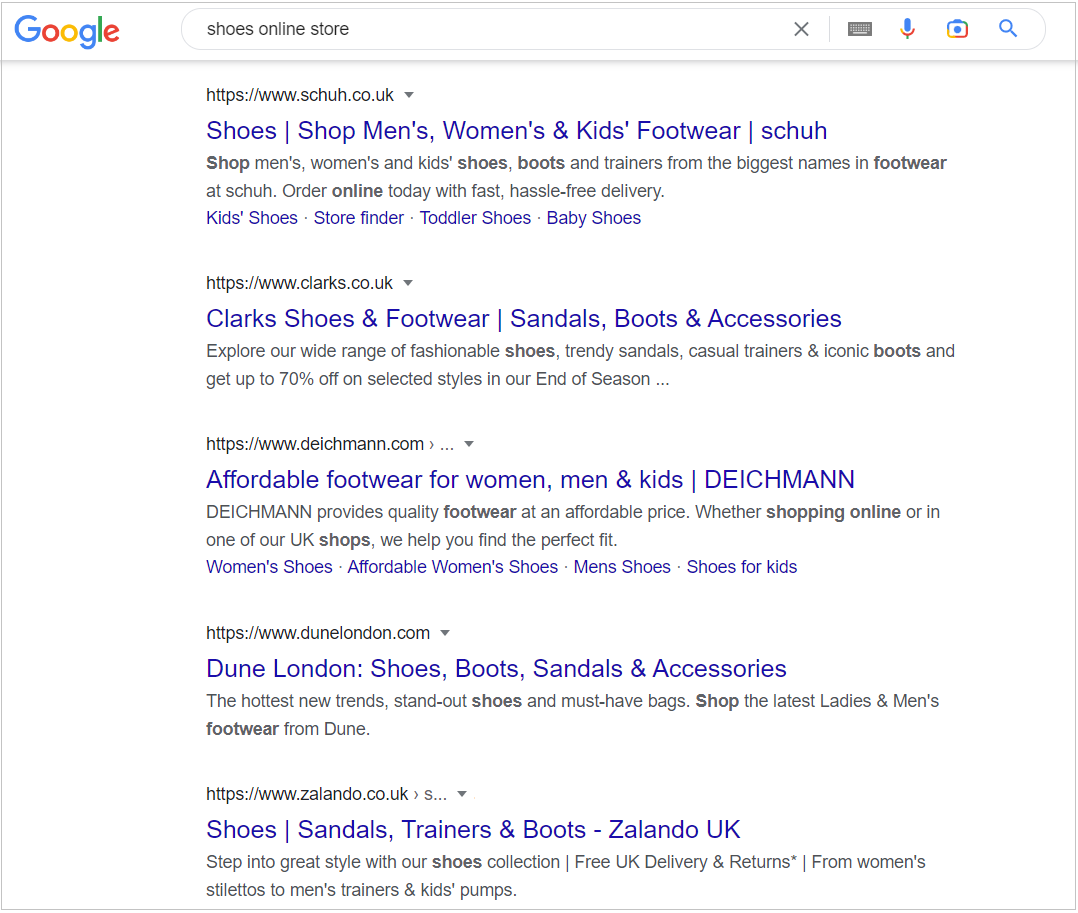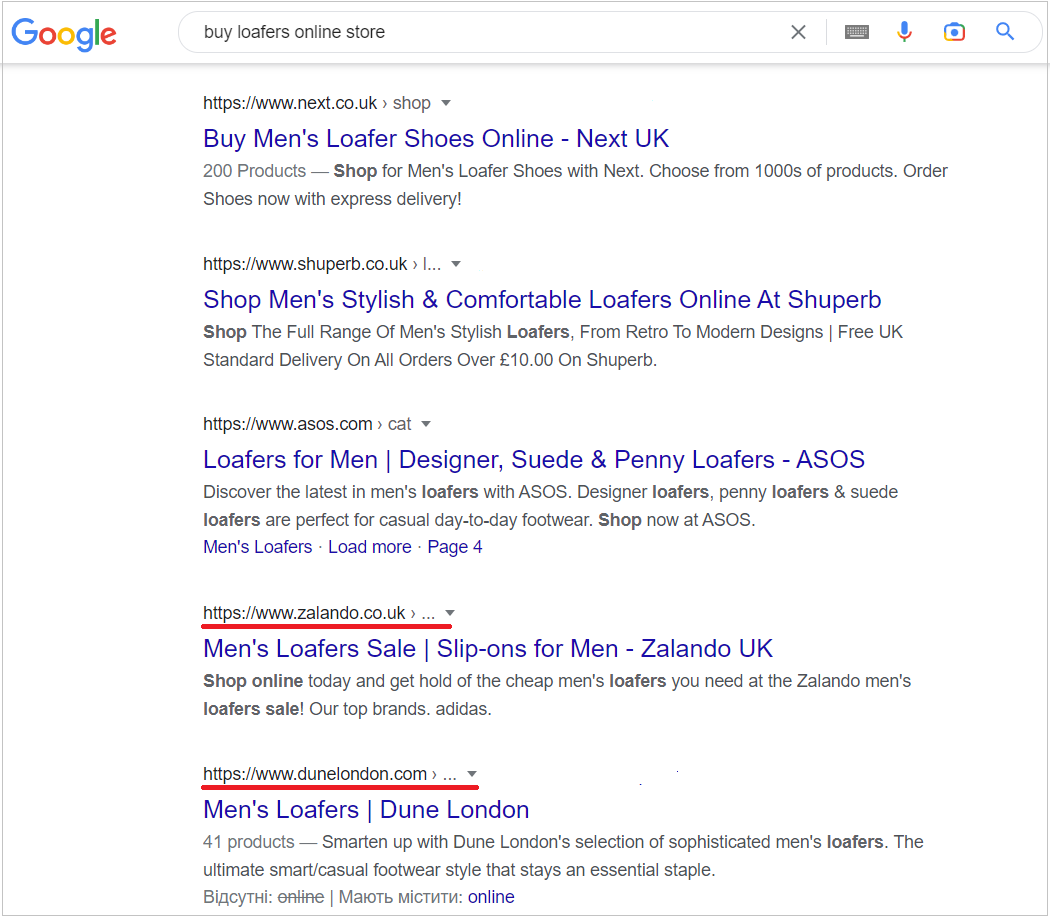- Setting goals
- Step 1 — finding market leaders and identifying competitors
- Step 2 — Evaluate your online shopping site
- Step 3 — Study pricing policy and an assortment
- Step 4 — Going the customer journey
- Step 5 — research your competitors' product offerings
- Step 6 — research your sales channels
- Step 7 — comparing marketing activities
- Analysis results
In e-commerce, the struggle between online stores never subsides. Entrepreneurs are constantly competing with each other for traffic and customers because this is how you can build a successful business. To win in this struggle, you need to know your opponents well, their strengths and weaknesses. Competitor analysis will help you get this information and then use it for your development.
In e-commerce, the struggle between online stores never subsides. Entrepreneurs are constantly competing with each other for traffic and customers because this is how you can build a successful business. To win in this struggle, you need to know your opponents well, their strengths and weaknesses. Competitor analysis will help you get this information and then use it for your development.
This article will tell you how to analyze your competitors and what the analysis includes.
Setting goals
Competitor analysis is not a goal but a tool you should use to achieve specific goals. Ask yourself, "What exactly do I want to get out of the analysis?" Your next steps will depend on this answer. For example, you want to use the information from the analysis to improve the unique selling proposition and increase sales. With this in mind, when researching your competitors, you need to find out:
-
Who the leaders are in your niche for your online store;
-
What sites do they have;
-
What are their pricing policy and assortment;
-
What are the peculiarities of their trade offers;
-
What sales channels do they use;
-
What marketing activities do they do
Choose your own goals and itemize the information you need to gather. There can be any number of items, but don't make them too detailed. These will be the checkpoints of sorts that you have to go through during the analysis. In the process, you can learn even more information about your competitors.
Step 1 — finding market leaders and identifying competitors
In e-commerce, there are always well-recognized leaders like Amazon, with which conventional online stores cannot compete. You can analyze them except for the general development and understanding of e-commerce trends. But the ones that interest you are the leaders in your niche. There are leaders even in small or specific segments, and you have to consider them as competitors.
Study Google's search results to determine your competitors. Start with more general queries, for example, and get results for the keyword «online shoe store». See who is on the first page of the results, excluding contextual advertising. Hopefully, you will also find yourself in the results because real market leaders pay a lot of attention to SEO and are almost always on the first page of results.

After general queries, move on to more specific ones. For example, examine the results for keywords that contain the name of popular products like «buy loafers». The top of the list is likely to be marketplaces, but we are not interested in them. The first page should go to any of the leaders in your segment you have identified earlier. They will be the object of your research.

Step 2 — Evaluate your online shopping site
Having made a list of your competitors, you can move on to a more detailed study of them. You have to start with the websites. Sometimes the website can be almost the main trump card of an online store due to its brilliant usability or functionality. When looking at competitors' sites, pay attention to:
-
design — what colors, banners, and fonts does the online store use, and how easy to use the website;
-
navigation — how the search for information and products on the website is built, how easy it is to find what you need, for example, through filters;
-
catalog — what kind of structure it has, what kind of principle goods are divided into categories and subcategories;
-
product card — what information it contains and what elements it consists of;
-
the mobile version — how well the website is adapted for use on mobile devices;
-
speed — how quickly the site loads and how it is evaluated by Google PageSpeed Insights;
-
additional content - whether the site has a blog of the online store or other additional information that might interest visitors.
When evaluating these parameters, look at the advantages and disadvantages of competitors' sites. If you see some exciting solutions that you do not have, then fix them and consider applying them to your site. If your websites are on the same level and it is unclear what makes you stand out, look for opportunities to be ahead of the competition in other aspects.
Step 3 — Study pricing policy and an assortment
For many people, price is the deciding factor in their purchasing decisions, so it's critical to have a competitive price for products. Look at what price other online stores have set for the goods you sell. If it is noticeably lower, find out why. Perhaps you should look for a new supplier for your online store. Also, look at operational costs that may be affecting your merchandise margins. For example, you're spending too much on storage or packaging. If your prices are, on the contrary, lower than your competitors, then you should emphasize this more in your marketing activities.
Also, compare your competitors' assortment with the one you offer. Shoppers love the assortment breadth, that is, a large selection, and prefer stores that provide it. If the merchandise items don't match, that's fine, but you need to understand what your assortment can do to attract customers. It can be, for example, a higher quality of goods or the presence of imported goods that are unique compared to competitors.
Step 4 — Going the customer journey
One of the best ways to study your competitor is to use their services. Buy something from competing for online stores and see how they work with their customers. Talk to managers, check out the quality of service, speed of sending orders, etc. Go the whole way as an ordinary shopper and compare customer service with your own. Be picky and picky as a customer to see how competitors handle different situations.
Compare your experiences with other customers. Read reviews of online stores from other customers and analyze why other customers praise and criticize them. This way, you can form an objective opinion about them. It will allow you to understand whether you need to improve something in the work of your online store or what you already stand out from your competitors.
Step 5 — research your competitors' product offerings
Every online store tries to think of something that will make it stand out from the others and make it more attractive in the customers' eyes. Find out what your competitors are betting on. Perhaps it is free shipping or a lifetime warranty on goods. Popular online stores always have something that they emphasize and use as an argument in their favor. Stores mention this advantage on their website, banners, newsletters and advertisements. Evaluate from the customer's perspective how attractive your competitors' unique selling proposition is. If the offer is worthy, think about how you can respond. But don't copy your competitors' tricks because secondary always leads to losing the battle for customers.
Step 6 — research your sales channels
See if your competitors use any sales channels other than the website, such as marketplaces, Google Shopping, social networks, etc. You will need this analysis to know how wide an audience of potential customers your competitors reach. If you're using one or two channels and your competitors are using five, you'll be inferior to them. Simply because of the lower recognition caused by the low number of mentions of your online store.
Based on your research, you should decide which sales channels you need to increase your presence there. You don't have to completely copy your competitors and display your products on identical platforms. You can expand your sphere of influence even through channels where none of your competitors exists. The main thing is to keep up the pace of your competitors and find new customer audiences.
Step 7 — comparing marketing activities
Research what techniques your competitors use to promote their online stores. You can find out about promotions, giveaways, and special offers from the stores' websites or social networks. It is also helpful to sign up for a competitor's mailing list to be informed promptly about new marketing activities. As with the USP, this analysis is necessary to understand how your marketing can outperform your competitors. But unlike USP, it's okay to adopt competitors' practices when creating your promotional strategy.
You might learn something new about promotion from your competitors that you've never used before. For example, you will see that pranks on Instagram have a significant effect, and competitors use them to attract many customers. After that, you will start to hold these drawings on the pages of your store on social networks. You can also conduct other promotions, similar to those held by competitors, but with improved customer conditions.
Analysis results
In addition, review the information you gathered from your competitor analysis. See what you managed to get and think about how to use this data. The result should be an action plan to improve your online store, allowing you to catch up, overtake or break away from your competitors. Repeat the analysis of your competitors regularly. It will help you to improve your performance and understand what is happening around you. After all, competition is one of the best incentives to grow your business.





